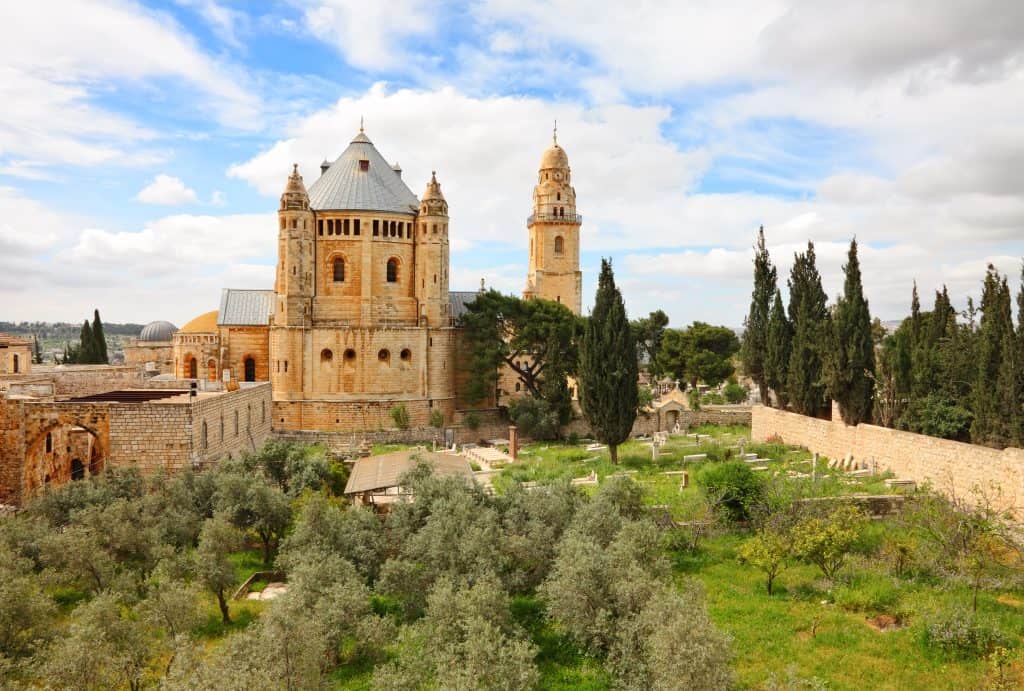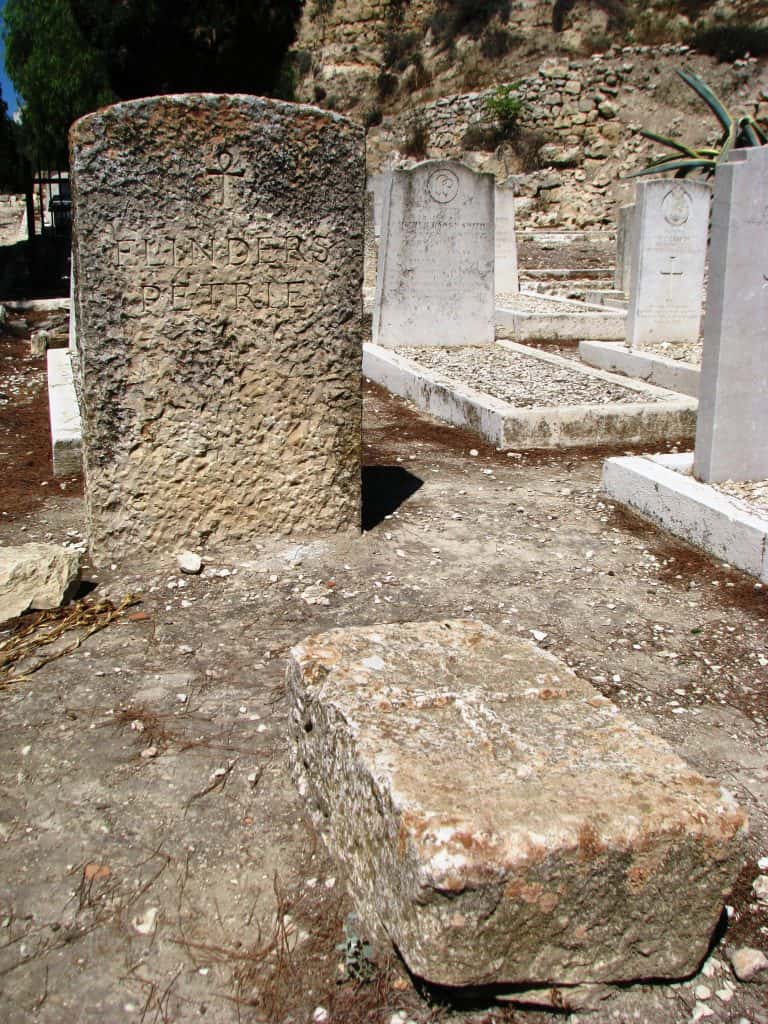The Mount Zion Cemetery in Jerusalem is the Christian pantheon of scholars and explorers of the Land of Israel. A rare protestant cemetery established by Presbyterian missionaries in the 19th century, the cemetery is the final resting place of many American and British missionary pioneers of the Ottoman period. Let’s get to know it better!

The first famous figure buried here is the man who is considered the father of modern archaeology, Flinders Petrie (1853 – 1942). Petrie was an English Egyptologist and a pioneer in archaeology and the preservation of artifacts.
He excavated many of Egypt’s most important archaeological sites, the most famous discovery being the Merneptah Stela. Dating back to the 13th Century BCE, the granite stela contains one of the earliest references to “Israel.” – Known as Israel Stele! Petrie developed the system of dating layers based on pottery and ceramic findings.

Credit: Hanay, CC BY 3.0, via Wikimedia Commons
Petrie was also a colorful and unusual character. For example, it is said that he assembled with his own hands a camera that he used in his excavations from a tin box of biscuits! And also, when measuring the ancient tombs in Giza in Egypt, he used to work naked on the day he was born. At the end of his days, he ordered his head to be submitted to scientific tests at the Royal College of Surgeons in London, and he was indeed buried headless! in the cemetery on Mount Zion.
Another Great Explorer of the Land of Israel – Conrad Schick
Conrad Schick (1822-1901), on the other hand – more settled in his mind – was an architect, cartographer, archaeologist, researcher of the Land of Israel, and a German Protestant missionary, who worked in Jerusalem in the second half of the 19th century. Schick was one of the prominent figures in Jerusalem of his time, the end of the Ottoman period, and was among the most important scholars of the Land of Israel and Jerusalem.
For many years he worked with the British Foundation for the Exploration of the Land of Israel (PEF) and the German Society for the Exploration of the Land of Israel (DPV). He published hundreds of articles dealing with the description of the physical condition of the city and the archaeological research work being carried out there. As an architect, he is considered one of the most prominent of the builders of Jerusalem during the time of leaving the walls and was behind the planning of the community, health, and residential institutions in the service of the Jewish and Christian communities.
Schick designed about half a dozen buildings in Jerusalem, some magnificent ones that left their mark on the city’s landscape, such as the Talita Komi Orphanage on King George Street. He designed Beit Tabor, the Mea Shearim neighborhood, the Deaconess Sisters’ Hospital (today part of the Bikur Holim Hospital), and more.
Where Can You Find Conrad Schick’s Tomb?
Schick lived in Jerusalem for 55 years, and when he died, his friend Avraham Luntz eulogized him and mourned the “great loss” known to the literature of the Land of Israel, “for since coming to Jerusalem in his youth, Shik devoted all his time to exploring the land, for many years he served as the city engineer of Jerusalem, and in his youth, he made models of the Temple Mount and the Jewish Temple. The tombstone of Konrad Schick and his wife in the Protestant cemetery on Mount Zion is one of the most prominent on the site, and on the tombstone is engraved, among other things, a quote in German:
“For They Have Wholly Followed The Lord”
(The Book of Numbers 32:12)
Where is the Mount Zion Protestant Cemetery?
So the cemetery is located on the grounds of the Jerusalem University College, also known as the Institute of Holy Land Studies, on the southwestern slope of Mount Zion. The cemetery stands on land purchased by Rev. Samuel Gobat in 1848. Gobat, Jerusalem’s Protestant Bishop at the time. Some lands were used to house the Bishop Gobat School, which operated from 1853 until the War of Independence in 1948.
In addition, archaeological finds have shown that the cemetery was built atop 2,000-year-old Hasmonean stones that formed part of the Jerusalem wall dating back to the Second Temple period. More recent excavations in the cemetery have uncovered a tomb and a mikveh (Jewish ritual bath) from the same era.

